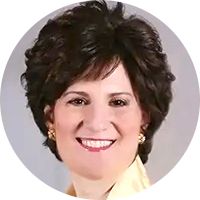Executives are still discussing whether or not contact centers agents will be allowed to work at home on a full-time or hybrid basis after the pandemic, but I believe the decision has already been made. Agents and other contact center employees have had a taste of freedom and are not going to give it up easily. Given the significant number of companies that are going to employ work-at-home (WAH) and hybrid agents, most anyone who wants to work this way will be able to find a job. Contact centers that insist on having all agents return to the office are going to see massive departures and ultimately will have no choice but to be more flexible. Given the direction of the contact center market in supporting more agile hiring practices, this blog post will address a couple of the questions surrounding WAH and hybrid employees.
Question #1: Should contact center managers, supervisors, team leaders, QM specialists, WFM administrators, etc. be allowed to work from home?
Answer #1: The answer is a resounding yes. If only for disaster recovery and business continuity purposes, it’s essential for all employees, from senior leadership to new agents, to know how to perform their job from home. This includes having the right equipment and necessary Internet bandwidth. But this is just a small part of the story. Contact centers, along with other functions in companies, should adopt agile staffing practices. This includes allowing employees to perform their job where they believe they will be most productive. This may be in the office, at home, or a combination of both via a hybrid model. Employees should also be allowed the flexibility to modify their work arrangements as their needs change.
Here’s another way to think about it – let’s say you have an outstanding team leader (or senior agent) who you want to promote to be a supervisor. This team leader is home- based, but your company guidelines require all supervisors to work from the office. Unfortunately, this outstanding employee cannot travel to the office 5 days a week, due to personal commitments. As a result, she won’t be able to take the promotion and now feels like people are disappointed in her. So, even though she loved working for your company and was great at her job, she resigns because she wasn’t allowed the flexibility to work full-time or part-time from her home. Flexible policies about work location are essential for attracting and retaining quality employees.
Question 2: Should supervisors be assigned agents who are only on-site, only off- site, or a mix of both?
Answer #2: One of the challenges in managing a hybrid workforce is ensuring that all agents receive the assistance and recognition they deserve; out-of-sight cannot mean out-of-mind. The unfortunate reality is that this is a concern even when everyone is working in the office. There are politically savvy people who know how to capture the attention of their supervisor, even if they are not great at their job. And there are people who are wonderful at their job and deserve attention and recognition but don’t receive it because they are quiet and unassuming. There is also everything in between. The point is that it can be extremely difficult for a supervisor who is responsible for 15 – 20+ agents to fully appreciate the strengths and opportunities of all of their employees, whether they are with them on-site or leading their team remotely. To address these issues, DMG recommends the following:
- Supervisors should manage a diverse group of agents comprised of people who work in the office, at home and hybrid (both in and out of the office).
- Supervisors (and/or team leaders) should be required to touch base with all of their employees on a daily basis, regardless of where they work. These are short contacts (face-to-face on-site or by video when remote) to check in with each agent, answer their questions, and ensure they have the support they need for the (For this to happen, contact center supervisors need to be freed from all of the superfluous jobs they are given, such as creating reports and managing the “sick/late” phone line and special projects, so that they can spend their time assisting their agents and customers.)
- Contact centers need to provide supervisors with tools and technology that give them the same visibility to manage their agents whether they are on-site or These include applications that automatically identify agent performance trends and opportunities and alert supervisors in real time when help is needed.
- Contact centers should develop a supervisory training class that provides instruction in how to coach agents. This course should provide best practices for delivering a continuous flow of feedback to agents independent of where they Supervisors should also be instructed in helping their agents with career development to enable them to achieve their own goals, whether that’s becoming the best contact center agent possible, moving up in the contact center or transferring to another department.
It’s essential for supervisors to know how to manage agents, regardless of where they sit during the day, as WAH and hybrid positions are expected to be standard options in contact centers going forward.
Final Thoughts
Workplace practices are changing, and contact centers that want to attract top talent are going to have to alter many of their established hiring and onboarding practices. The demand for contact center agents is higher than ever, which means that employees have greater choice about where they work and for whom. Companies need to revisit and modify many of their traditional contact center hiring practices. This is going to include reviewing and increasing salary rates, providing flexibility in where agents and other contact center employees work, and coming up with creative approaches to engage, empower, retain and promote these critical resources.



